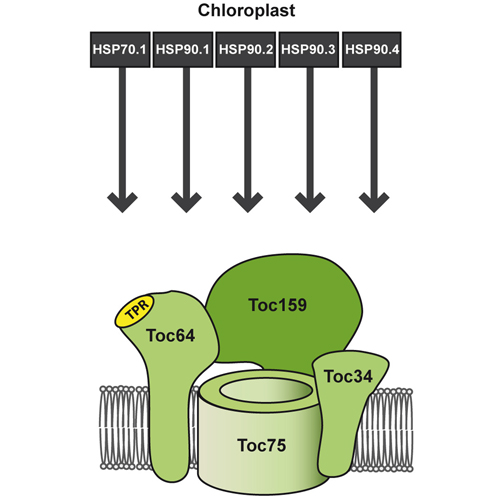Quantification of Interaction Strengths between Chaperones and Tetratricopeptide Repeat Domain-containing Membrane Proteins
18-Oct-2013
Journal of Biological Chemistry, 2013, doi: 10.1074/jbc.M113.493015, 288, 30614-30625 published on 18.10.2013
Journal of Biological Chemistry, online article
Journal of Biological Chemistry, online article
The three tetratricopeptide repeat domain-containing docking proteins Toc64, OM64, and AtTPR7 reside in the chloroplast, mitochondrion, and endoplasmic reticulum of Arabidopsis thaliana, respectively. They are suggested to act during post-translational protein import by association with chaperone-bound preprotein complexes. Here, we performed a detailed biochemical, biophysical, and computational analysis of the interaction between Toc64, OM64, and AtTPR7 and the five cytosolic chaperones HSP70.1, HSP90.1, HSP90.2, HSP90.3, and HSP90.4. We used surface plasmon resonance spectroscopy in combination with Interaction Map® analysis to distinguish between chaperone oligomerization and docking protein-chaperone interactions and to calculate binding affinities for all tested interactions. Complementary to this, we applied pulldown assays as well as microscale thermophoresis as surface immobilization independent techniques. The data revealed that OM64 prefers HSP70 over HSP90, whereas Toc64 binds all chaperones with comparable affinities. We could further show that AtTPR7 is able to bind HSP90 in addition to HSP70. Moreover, differences between the HSP90 isoforms were detected and revealed a weaker binding for HSP90.1 to AtTPR7 and OM64, showing that slight differences in the amino acid composition or structure of the chaperones influence binding to the tetratricopeptide repeat domain. The combinatory approach of several methods provided a powerful toolkit to determine binding affinities of similar interaction partners in a highly quantitative manner.











